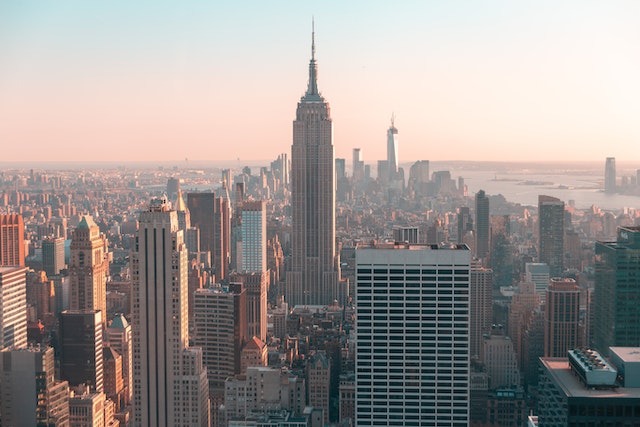
Why is New York called New York? New York is called New York because it was named in honor of the British Duke of York.
Before European people colonized the Americas, the Algonquian speaking Native Americans lived in the area where New York is now. The Algonquian speaking people were the largest indigenous group in North America. They all spoke slightly different versions of the language, but it was generally mutually understandable. They stretched from where Virginia is now, up into where northern and central Canada are now. They were divided into many different tribes and the tribe that lived in the area where New York is now were the Lenape people. They called the area Lenapehoking and the eat bank of what would become the Hudson River, Mana-hata.
In 1524 an Italian called Giovanni da Verrazzano arrived on the east coast of Northern America and voyaged from just above where Florida is now to half way up Canada. He arrived in New York harbor and was greeted by the Lenape people. The French king had paid for the voyage, so Verazzano claimed the area for France. He called it New Angouleme because the French King Francis I was from the royal house of Valois-Angouleme. He never established any settlements.
In 1609, Henry Hudson (who the Hudson River is named after) sailed into the area. He was English, but he was sailing for the Dutch East India Company. In 1614, he claimed the whole area for the Dutch. He reported that there were a large number of beaver in the area. Beaver pelts were prized because they could be used to make waterproof hats. In 1624, a trading settlement was built in the area and called New Amsterdam. It stretched from where the end of Manhattan is now to where Wall Street is. By 1642, the settlement had a population of 720 people. The city of New Amsterdam was in the colony of New Netherland.
By 1647, the population had grown to 8,000. The Director-General of the colony was Peter Stuyvesant. He did some good things for the colony but was generally an unpopular governor. He expanded the settlement and built the wall that Wall Street is named after. He was very much against religions other than his own and was particularly antisemitic. He restricted liquor sales as well, which might have had more to do with his unpopularity.
The English had established their first permanent colony in Jamestown in 1607. They slowly increased the amount of land they occupied and by 1664, English dominance in the area was slowly growing and they were threatening the area of New Netherland. The colony of Connecticut were slowly encroaching on the land of the Hudson Valley. Stuyvesant made a treaty with England in 1650, where they agreed to keep to their own areas. The English soon ignored the treaty and Connecticut settlers continued moving into the Hudson Valley. By 1664, England had taken so much of the land that they moved to take over all over New Netherland.
Stuyvesant recognized the danger and tried to get people to stand up to the English, but he wasn’t popular enough and couldn’t get any support. The people of New Netherland were fed up with the governance of the Royal Dutch Company that was only interested in profits. Stuyvesant had no choice but to surrender New Netherland and New Amsterdam to Colonel Richard Nicolls. Nicolls allowed Dutch people to stay in the city and he gave them freedom to practice whatever religion they chose.
Nicolls renamed the city New York, in honor of the Duke of York, who was soon to become his king, James II of England. This name lasted until 1673 when the Dutch retook the city from the English. They gave the city its fourth name: New Orange, after William III, the Prince of Orange. They only kept it for a year before returning it to the English and the name was changed back to New York. The Dutch did get the last laugh, though, because James II was deposed by William II of Orange, a Dutch prince, who became King of England.
America gained independence in 1775, but the name of the city was never changed, and to this day, New York is probably better known around the world than Washington D.C.
So, the quintessential American city was named by an Italian for the French, then an Englishman for the Dutch, then by the English, before being renamed by the Dutch, and then by the English again. And that is what I learned today.
Sources
https://en.wikipedia.org/wiki/New_York_City
https://www.history.com/this-day-in-history/new-amsterdam-becomes-new-york
https://www.newyorker.com/books/page-turner/how-new-york-was-named
https://en.wikipedia.org/wiki/Lenape
https://en.wikipedia.org/wiki/New_Amsterdam
https://en.wikipedia.org/wiki/Peter_Stuyvesant
https://www.historytoday.com/archive/new-amsterdam-surrendered-english
